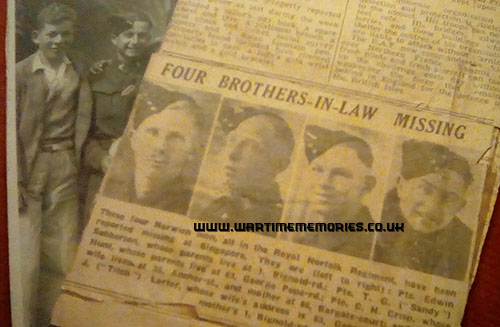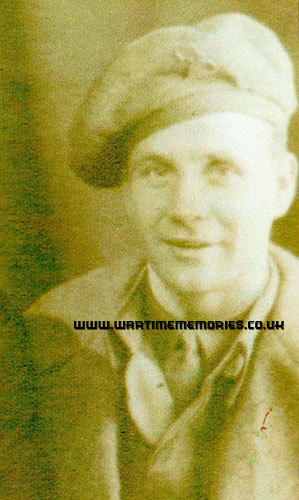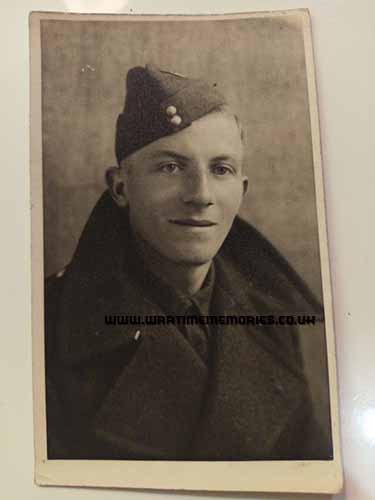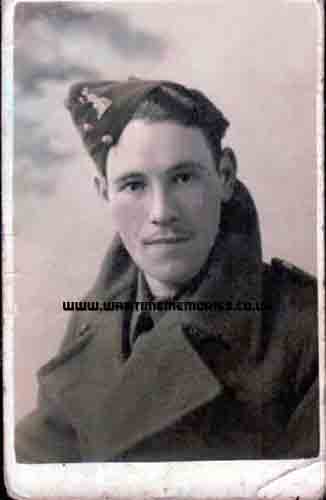|
|
|
Those known to have served with 6th Battalion, Royal Norfolk Regiment during the Second World War 1939-1945. - Alderton Godfrey George. L/Cpl. (d.26th Jan 1942)
- Barker George Henry. Pte. (d.26th Jan 1942)
- Burton Sidney Geoffrey. Pte. (d.12th Aug 1943)
- Fryer Jonathan. Pte. (d.20th Jan 1942 )
- Garrould Cecil Alfred. Pte.
- Green Raymond Hobart. Pte. (d.21st September 1944)
- Guest Donald. Pte. (d.25th January 1942)
- Hollis Herbert. Pte.
- Larter David John Wighton. Pte. (d.9th July 1943)
- Manning Francis Arthur. Pte (d.14th July 1941)
- Morris Joseph Arthur. Pte
- Prendergast Thomas Joseph . Pte (d.26th Jan 1942)
- Sabberton Edwin. Pte.
- Sainsbury George Arthur Herbert. Pte.
- Spencer John Edward. Pte.
The names on this list have been submitted by relatives, friends, neighbours and others who wish to remember them, if you have any names to add or any recollections or photos of those listed,
please
Add a Name to this List
Records of 6th Battalion, Royal Norfolk Regiment from other sources.
|
|
|
The Wartime Memories Project is the original WW1 and WW2 commemoration website.
Announcements

- 1st of September 2024 marks 25 years since the launch of the Wartime Memories Project. Thanks to everyone who has supported us over this time.
- The Wartime Memories Project has been running for 25 years. If you would like to support us, a donation, no matter how small, would be much appreciated, annually we need to raise enough funds to pay for our web hosting and admin or this site will vanish from the web.
- 19th Nov 2024 - Please note we currently have a huge backlog of submitted material, our volunteers are working through this as quickly as possible and all names, stories and photos will be added to the site. If you have already submitted a story to the site and your UID reference number is higher than
264989 your information is still in the queue, please do not resubmit, we are working through them as quickly as possible.
- Looking for help with Family History Research?
Please read our Family History FAQs
- The free to access section of The Wartime Memories Project website is run by volunteers and funded by donations from our visitors. If the information here has been helpful or you have enjoyed reaching the stories please conside making a donation, no matter how small, would be much appreciated, annually we need to raise enough funds to pay for our web hosting or this site will vanish from the web.
If you enjoy this site
please consider making a donation.
Want to find out more about your relative's service? Want to know what life was like during the War? Our
Library contains an ever growing number diary entries, personal letters and other documents, most transcribed into plain text. |
|
Wanted: Digital copies of Group photographs, Scrapbooks, Autograph books, photo albums, newspaper clippings, letters, postcards and ephemera relating to WW2. We would like to obtain digital copies of any documents or photographs relating to WW2 you may have at home. If you have any unwanted
photographs, documents or items from the First or Second World War, please do not destroy them.
The Wartime Memories Project will give them a good home and ensure that they are used for educational purposes. Please get in touch for the postal address, do not sent them to our PO Box as packages are not accepted.
World War 1 One ww1 wwII second 1939 1945 battalion
Did you know? We also have a section on The Great War. and a
Timecapsule to preserve stories from other conflicts for future generations.
|
|
Want to know more about 6th Battalion, Royal Norfolk Regiment? There are:1328 items tagged 6th Battalion, Royal Norfolk Regiment available in our Library There are:1328 items tagged 6th Battalion, Royal Norfolk Regiment available in our Library 
These include information on officers, regimental histories, letters, diary entries, personal accounts and information about actions during the Second World War. |
|
Pte Thomas Joseph Prendergast 6th Btn Royal Norfolk Regiment (d.26th Jan 1942) Joe Prendergast was my mother's brother, my uncle. He lost his life in 1942.
|
Pte. Edwin Sabberton 6th Btn. Royal Norfolk My Dad's cousins, David Larter and Edwin Sabberton went missing in Singapore with the 6th Norfolk Regiment, along with their brothers in law, Tom Hunt and Horace Crisp. My dad who is on the photo with David served in the merchant navy in the war.
|
Pte. Cecil Alfred Garrould 6th Btn. Royal Norfolk Regiment My father, Cecil Garrould enlisted on the 13th of June 1940 and was posted to Singapore. Documents show that he and thousands of others there were ordered to surrender when Singapore fell to the Japanese. As a POW he was assigned to No. 1 Railway Battalion, which worked on constructing the Thai-Burma Railway, from 4th of December 1942 to 11th of February 1944. During this time he was held in work camps at Ban Pong, Nong Pladuk, Tahlua, Kanburi (Kanchanaburi), Ban Kau, Wampo (Wang Po), Tan Yen, Conchon, Nam Pei, Kinsaiyok, Pran Kiash, Tomajo, and Hindato. From 12th of February 1944 to 2nd of February 1945 he was involved with camp construction (Nong Pladuk), then dock and general work (Singapore), and was ultimately sent to Saigon on 8th of February 1945, remaining there until 13th of August 1945.
Like all POWs held by the Japanese, he endured horrendous conditions and hardship. His medical history during this time included bouts of malaria, colitis, fever, and dysentery. I cannot read the name but the designation on one of the documents is by a major with the Gordon Highlanders, and he wrote "A man who endured the hardships of this period without being evacuated has something to be proud of".
His military release certificate, issued at the Warwick Record Office, is signed and dated 26 March 1946.
My father did not talk of his time as a POW. There is a letter awarding him medals but I understood from my mother that he refused them. We believe this was to do with the circumstances around the surrender. Strangely enough, having lived on little except rice during his captivity, it was still one of his favourite dishes.
Sadly, my father died far too early, in 1982.
|
Pte. George Arthur Herbert Sainsbury 6th Btn. Royal Norfolk Regiment George Sainsbury served with the 6th Royal Norfolk Regiment.
|
Pte Francis Arthur Manning 6th Btn Royal Norfolk Regiment (d.14th July 1941) Private Francis Manning served with the Royal Norfolk Regiment 6th Battalion in WW2.He died 14th of July 1941 aged 28 years and is buried Feltwell (St Nicholas) Churchyard United Kingdom. Son of Mr. and Mrs. G. A. Manning, of Feltwell.
|
Pte. Donald Guest 6th Battalion Royal Norfolk Regiment (d.25th January 1942) 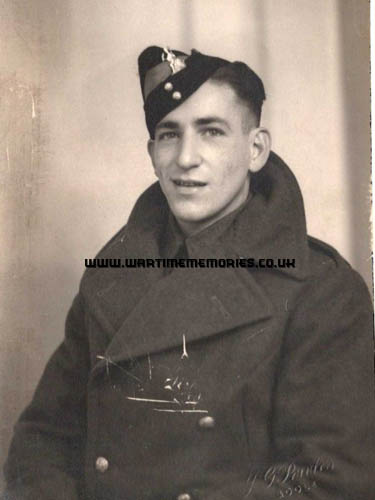 Donald Guest was one of the vast number of men who were called to attend a Medical Board Centre in 1939 under the Military Training Act, 1939. Donald, at the time, was employed by Lep Transport (Goole) in the garage department. No doubt he had kept up with the daily news bulletins over the year and his call up would not have come as a surprise. This was the first step on a journey which ended with him being killed in action against the Japanese in World War 2.
The third son of George William and Mary Ann Guest, Donald was born in Hook Road, Goole, on 11th October 1918. On leaving St. John`s National School, Goole, he started his working life as a milkman with the Goole Co-operative Society, and later at Miss Smith`s dairy at Portington. With this kind of working environment, he became a well known and popular figure in the area and family photographs and recollections show why this was the case.
When his call up came Donald was attached to the 6th Battalion of The Royal Norfolk Regiment. After military training which was mainly on Bren Gun carries, he and his fellow comrades were posted to various places around the British Isles. One of the final duties performed by the battalion was on the docks at Liverpool. At the time the docks and the shipping there were under a period of heavy bombing by the German air force. Under constant threat of exploding bombs their duties were to stop looting of warehouses and orders were given to shoot any suspected looters.
After his duties in Liverpool, Donald arrived back on leave in Goole towards the end of September 1941 to spend time with his family. His time here was interrupted by a telegram for him to report back to camp at Knowsley Park near Prescot on Merseyside by the 2nd of October. At this time, when he left his family in Goole, they did not realise this would be the last they would see of Donald alive.
Rejoining the 6th Battalion, Donald and his colleagues settled into army life ready for their next call of duty. On parade later that month they were told that they were leaving camp but no destination was indicated. Rumours were rife as to where this would be; the Middle East being the favourite. The Battalion with the rest of the 53rd Brigade arrived by rail at Gourock near Glasgow on the 29th of October 1941. Moved from the dockside by ships tender, they climbed on board the Duchess of Atholl, a cruise ship in peace time, but now used as a troopship. Over the next day the river was an hive of activity, with other members of the Armed Forces joining other troopships anchored on the River Clyde. The ships siren sounded at 23.00 hrs on the 30th and the troopships with naval escort moved with purpose down the river to open sea. No doubt many of the troops collecting on deck wondered if this would be the last time they would see these shores again.
On board the troops settled down the best they could, many hoping they had the sea legs to endure their journey without too much discomfort. Off the Irish coast this flotilla of ships rendezvoused with the rest of the convoy taking the 18th Division to their unknown war destination. Out in the North Atlantic, Donald, with the rest of his comrades, soon found out why the ship was nicknamed `the drunken duchess`, with many of the troops suffering from sea sickness, plus the added danger of lurking U-boats beneath the waves, made for uncomfortable sailing for everyone on board.
Earlier in the year, Winston Churchill had been trying to persuade President Roosevelt, to provide help with the British war effort. At that time the USA was not at war with Germany and with many members of Congress not in favour, this was always going to be difficult for the President. His position was helped in September when a German U-boat made a failed attack on a U.S. destroyer. Later, when Churchill asked for troopships and Navy escorts for British troop reinforcements for the Middle East, this was granted. The U.S. Navy took command of the convoy under secrecy off the coast of Greenland and sailed for the port of Halifax in Canada.
The convoy docked on the 5th of November 1941 and by the 10th of November the troops were sailing away from Halifax aboard the USS Mount Vernon, another liner converted to troopship duties. Despite the usual confined spaces for non officers they found to their amazement how food was plentiful and what great variety there was. After war time rationing at home this must have seemed like five star luxury. In open waters the ship joined others to form The William Sail 12X Convoy, nicknamed `Winston`s Special`. After calling at Trinidad they sailed towards Cape Town, and while on this course, the Japanese attacked Pearl Harbour and America entered the war. The USS Mount Vernon, after stopping briefly in Cape Town, made for Mombassa, where on December 23rd, Donald was able to send Christmas greetings to his family by telegram.
Just before leaving Mombassa on December, 29th, General Percival, on the island of Singapore, had asked for reinforcements and with its speed capabilities, the USS Mount Vernon was chosen. With one more stop in the Maldives she and her escorts made for Singapore. In her approach to Singapore she narrowly missed a mine and was then spotted by Japanese planes. Fortunately, there was low cloud due to a tropical storm which hindered the planes in making any decisive bomb drops. She arrived undamaged on January, 13th 1942 and immediately started to unload its cargo and troops.
General Percival`s intention was to hold the 53rd Brigade in reserve. The speed at which the Japanese forces moved down Malaya towards Singapore gave him little option but to send the Brigade into action. With a foe they knew little about, and without training or suitable equipment, the odds were stacked against them. The 6th Battalion first saw action on the 17th near Ayer Hitam and suffered their first fatalities. On the 24th of January, after giving a good account of themselves, Donald and his fellow soldiers were told to pull back to Yong Peng where they arrived exhausted. The men had their first hot food in several days.
Next day, after resting, the troops arrived in Batu Pahat, where the intention was to help with other British Forces to hold a new line of defence. Very early on the enemy began to probe these defences, and towards the end of the day troops began withdrawing for Senggarang. This prompted a heavy bombardment by the Japanese. A carrier in the departing convoy, with the plan of driving to Rengit, further along the road from Senggarang, went beyond this destination for some reason, and was ambushed. A group of men were ordered to see if they could find any survivors and also, if possible, clear the road block. One of the Bren Gun carriers sent was driven by Donald Guest. There is no account of what happened, but all the men were killed and the mission failed.
With the confusion after the fall of Singapore, the telegram reporting Donald was missing, did not reach the Guest family until the 26th of March 1942. This stated that Donald was posted as missing on the day Singapore surrendered, the 15th of February 1942. Not until July 1943, when a letter arrived from the War Office stating that an officer from his unit had information that Donald had been killed in action on 25th of January, 1942, but until definite confirmation was received, Private Guest would still be posted as missing. The prolonged wait for final confirmation of what had happened did not reach Donald`s mother until after the war. The War Office sent a letter on the 5th of December 1945, stating Donald had in fact, been killed in action on 25th/26th January 1942. Six days later the Army Council sent the same information bringing an end to any lingering hope Mrs. Guest and her family had of seeing Donald alive again. A death certificate for Donald, dated 10th of January 1946, brought home the reality of his death. Mary Ann Guest, thankful that her other two sons, Oswald and Clarence, came home from serving their country safely, began looking to the future. A twist to this story came on the 18th of January 1943, when another letter came from the War Office. As Mary Ann looked at the envelope did she harbour hopes that everyone had made a mistake and the envelope contained news that Donald was still alive? Unfortunately not, inside was a second death certificate.
Donald is commemorated at Kranji War Cemetery near Singapore and at the Cenotaph in Goole.
|
Pte. John Edward Spencer 6th Btn. Royal Norfolk Regiment Jack Spencer served with 6th Btn. Royal Norfolk Regiment.
|
Pte. Sidney Geoffrey Burton 6th Btn. Royal Norfolk Regiment (d.12th Aug 1943) Sidney Burton was almost 24 years of age when he died in a POW camp in Thailand. He is buried in a CGWC grave in Kanchanaburi War Cemetery, Thailand.
|
Pte. Raymond Hobart Green 4th Battalion Royal Norfolk Regiment (d.21st September 1944) After completion of Burma/Thailand railway Hofuku Maru had left Singapore with POW it stayed in Manilla for about a month.
21st September 1944 approximately 80nm North of Corregidor Island beginning 10.35 the convoy was attacked by planes of the 2nd wave of U.S. Task Force 38. The Hofuku Maru was sunk on board were 1,289 POW's, of which 1,047 lost their lives.
|
Pte. Jonathan Fryer 6th Btn. Royal Norfolk Regiment (d.20th Jan 1942 ) Jonathan Fryer served with the 6th Battalion, Royal Norfolk Regiment.
|
Recomended Reading.Available at discounted prices.
|
|
|






